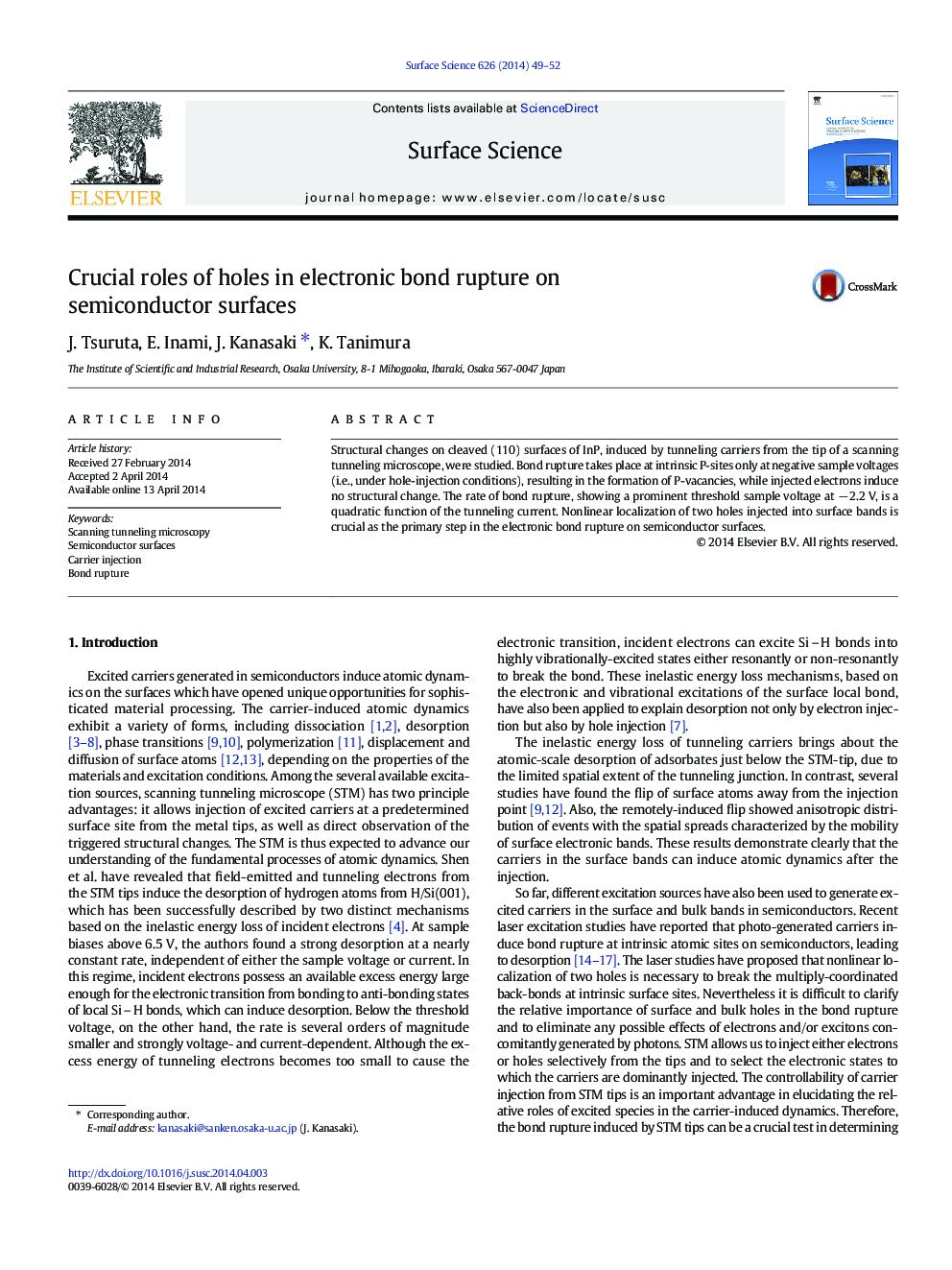| Article ID | Journal | Published Year | Pages | File Type |
|---|---|---|---|---|
| 5422096 | Surface Science | 2014 | 4 Pages |
Abstract
Structural changes on cleaved (110) surfaces of InP, induced by tunneling carriers from the tip of a scanning tunneling microscope, were studied. Bond rupture takes place at intrinsic P-sites only at negative sample voltages (i.e., under hole-injection conditions), resulting in the formation of P-vacancies, while injected electrons induce no structural change. The rate of bond rupture, showing a prominent threshold sample voltage at â 2.2 V, is a quadratic function of the tunneling current. Nonlinear localization of two holes injected into surface bands is crucial as the primary step in the electronic bond rupture on semiconductor surfaces.
Related Topics
Physical Sciences and Engineering
Chemistry
Physical and Theoretical Chemistry
Authors
J. Tsuruta, E. Inami, J. Kanasaki, K. Tanimura,
